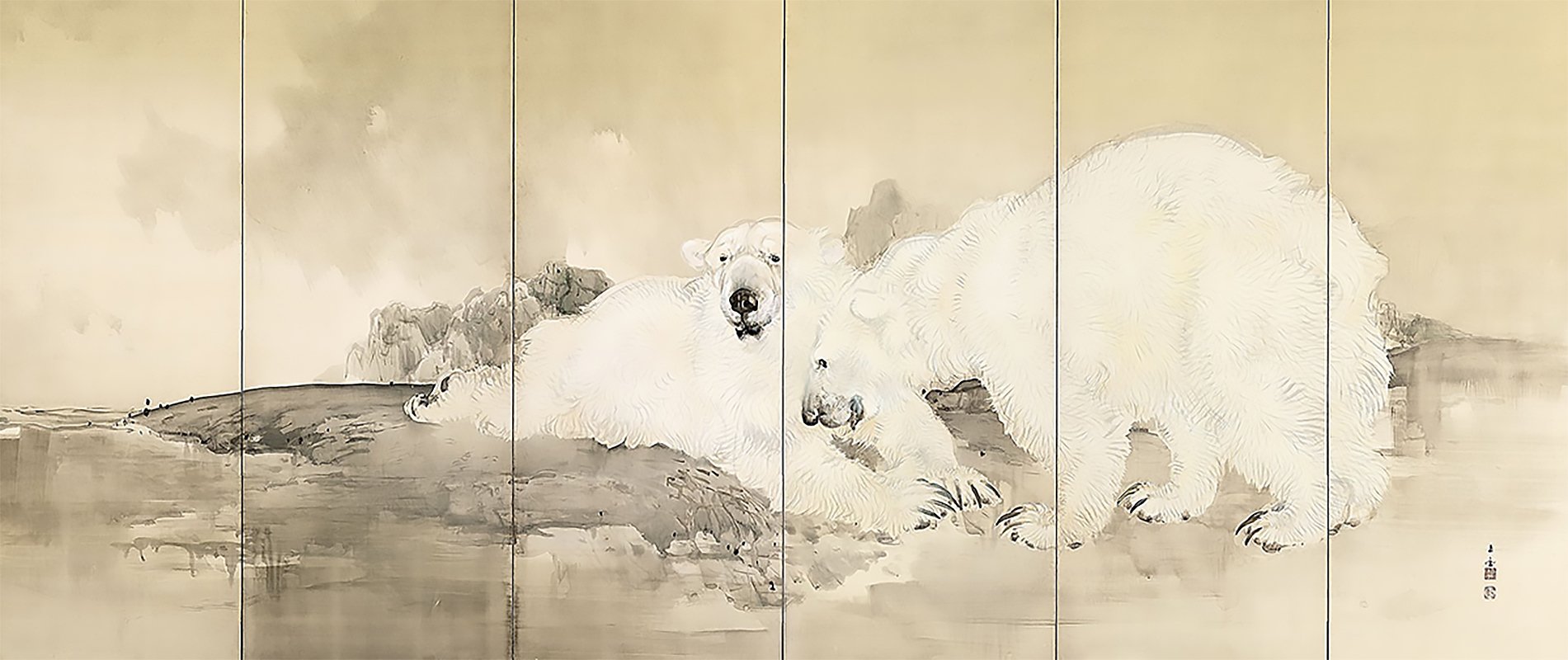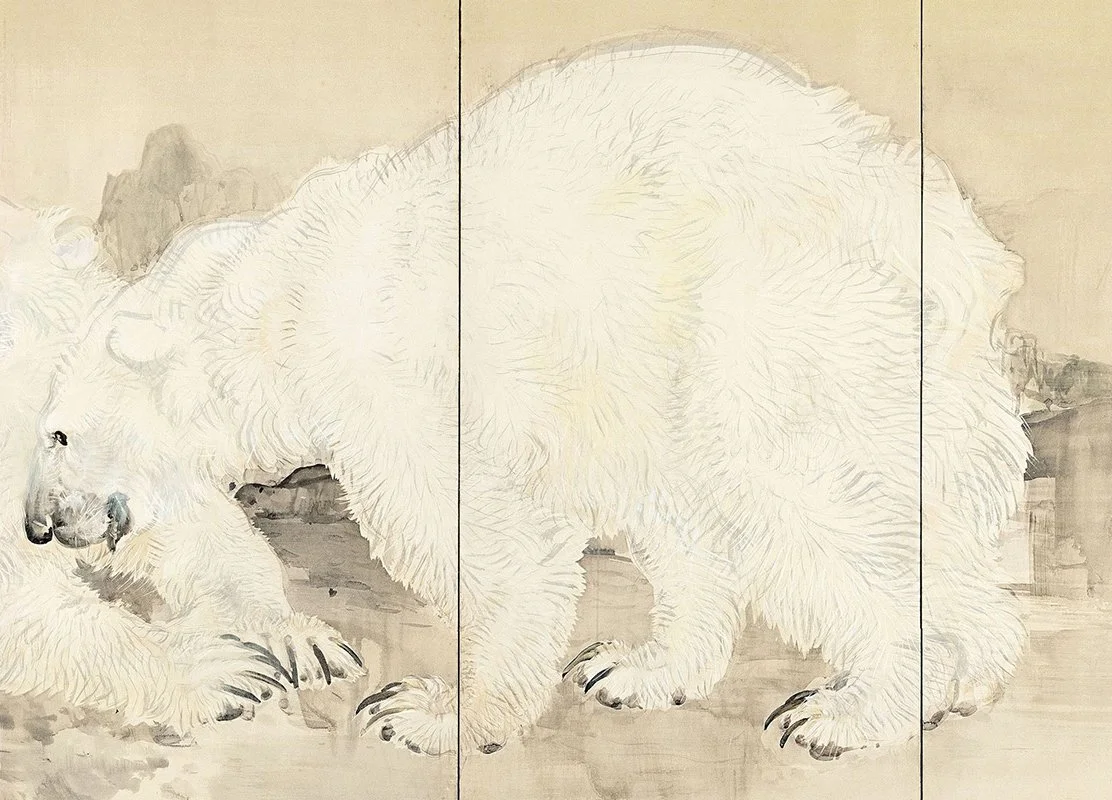PAINTINGS & SCREENS
NISHIMURA GOUN, PAIR OF BYOBU WITH POLAR BEARS & A BROWN BEAR
Pair of byobu or folding screens in six panels, painted on paper in mineral pigments, gofun or clam shell gesso, and sumi ink, the left-hand screen with a small Japanese brown bear and sasa bamboo; the right-hand with a pair of polar bears on an icy sea shore. The right-hand screen signed on the lower right side by the artist: Goun, and sealed twice: Nishimura Baisho and Goun; and the left-hand screen signed on the lower left side: Goun, and sealed twice: Nishimura Baisho and Goun (Nishimura Goun, 1877 – 1938). With roiro polished black lacquer frames and heavy pierce-work silver mounts. Late Meiji era, circa 1907 – 1908.
With the original screen storage box, the interior of the lid fitted with a paulownia wood plaque titled: Kuma no Zu or Design of Bears, and signed: Goun Daisu or Titled by Goun, and sealed: Goun.
Born to a Kyoto family of textile dyers, Nishimura Goun studied painting under Kishi Chikudo and Takeuchi Seiho. He exhibited at the 1st Bunten in 1907 and then again in 1912 and 1913. From 1909 he taught at the Kyoto Municipal School of Arts and Crafts, and in 1924, after recovering from a protracted illness, he began teaching at the Kyoto Municipal Special School of Painting. He became known for his distinctive and expressive animal studies and, in the last decade of his life, for his landscapes. As Ellen Conant writes in Nihonga: Transcending the Past, an “utter refinement of…execution” characterized Nishimura Goun’s work, which has “the brevity and evocative charm of haiku or a musical etude.”
For another painting by Goun, c.f. Kagedo’s catalogue Light Through Clouds, number 47.
In 1907, Nishimura Goun’s entry into the 1st Bunten was a painting of a roaring polar bear, now in the collection of the Yamatane Museum of Art in Tokyo (illustrated in Masterpieces from the Yamatane Collection, page 33, number 9). This painting was inspired by the opening of the Kyoto City Zoo in 1903, where Goun saw a polar bear for the first time. Clearly that painting led to a private commission for the painting of these screens.
From the left, Goun describes a cold winter landscape. Dark smudges of paw prints trail to the figure of a small black bear rolling in the snow. Around him, scattered sprigs of sasa bamboo struggle through the white blanketing the scene. A dark ragged diagonal of water slopes across the top of the scene towards the right-hand screen. Here, Goun shifts the scene to a barren sea shore with two great polar bears. Their faces seem melancholy, and one bear still drips with seawater as it nuzzles its mate. Rocks rise in the distance to a threatening, snow-darkened sky. Goun paints with quick, almost sketchy brushstrokes, broadly suggesting the abstracted terrain and rendering the bears with an impressionist eye. The right screen plays against the left: large white bears in a darkened landscape against a small dark one in a snow-whitened scene. Balancing each other in the composition, the bears themselves embody a powerful yet detached naturalism. Goun brings these wild creatures vividly close while coolly conveying their inevitable remoteness.
Nishimura Goun, Pair of Byobu with Polar Bears & a Brown Bear
Artist Name: Nishimura Goun
Period: Meiji Taisho
Mediums: Mineral Pigments
Form: Screen
Origin Country: Japan
67” high x 147” across, dimensions of each screen when opened flat
This piece is no longer available.





